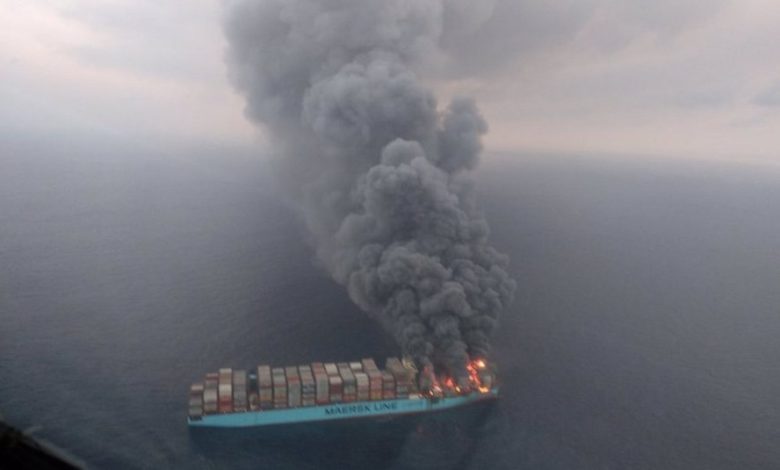New dangerous goods packing guidelines published in fight against boxship fires

In the latest bid to fight the scourge of containership fires, insurance mutuals UK P&I and TT Club have published guidelines under the title Book it Right and Pack it Tight.
2019 was especially bad for containership fires with more than one major incident a month.
January 1 this year saw mandatory enforcement of the latest version of the IMDG Code, Amendment 39-18. As the incorrect declaration, packing, handling and stowage of dangerous goods of all types is seen as a primary cause of many container ship fires, the two insurance mutuals’ new guide provides key insights for all actors in the freight supply chain responsible for preparing unitised consignments for carriage by sea. It gives an overview of the practical duties and responsibilities under the IMDG Code for each stakeholder to try and tackle the causes of fires at source.
“As so often the case, fires and explosions are merely the tip of the iceberg of problems, which are inherent throughout the supply chain,” commented Peregrine Storrs-Fox, TT Club’s risk management director. “There are far too many errors in classification and declaration of commodities to be transported. These are often amplified by poor decisions and practices relating to packaging, packing, segregation and securing. Such errors severely compromise safety in a variety of ways, but most critically when the goods should be rightly be described as dangerous in a regulated sense and, here, in compliance the IMDG Code.”
Exis Technologies, which has detailed knowledge of the IMDG Code Dangerous Goods List and stowage requirements, has categorised each commodity on the list by UN Number, placing it in an appropriate risk zone. Exis has put its Hazcheck Risk Zone Data online as a free resource to all involved across the container supply chain.
In the wake of many massive fires over the past 18 months, major liners have started imposing fines on shippers who have failed to declare hazardous cargoes in their containers.
According to the Cargo Incident Notification System (CINS), nearly 25% of all serious incidents onboard containerships were attributable to misdeclared cargo.
While the exact breakdown of cargo contents varies by container, it’s well known that at any given time, between 5-10% of an average container ship’s cargo is declared as hazardous goods and approximately 12% of global container trade comprises dangerous goods. However, it’s nearly impossible to know how much dangerous cargo is undeclared, or misdeclared.

I’ve been Master on a vessel where we had a fire in the hold due to undeclared DG cargo. The industry needs to tackle mis-declaration if it is serious in tackling this menace!
It is so naive to imagine that people which, in most case, did voluntarily misdeclare goods will change their behaviour if they receive some guideline.
There are 3 types of shippers and 3 types of dangerous goods
Shippers
1.Complies with IMDG Code
2.Ignorant, lesser compliant hence may offer some goods as non-dangerous or mis-declared
3.Wilfully falsify information and offer dangerous goods as non-dangerous
Dangerous goods
1.Fully compliant to the code
2.Misdeclared dangerous goods
3.Undeclared dangerous goods
Types 2 & 3 in both cases may cause accidents out at sea.
Blanket prohibition of certain goods or blacklisting shippers wont solve the problem. Carriers need to work with shippers for enhancing shipper’s understanding of the Code.
Most issues of non / mis declaration is out of ignorance.
IMDG Code rightly says that “The successful application of regulations concerning the transport of dangerous goods and the achievement of their objectives are greatly dependent on the appreciation by all persons concerned of the risks involved and on a detailed understanding of the regulations”